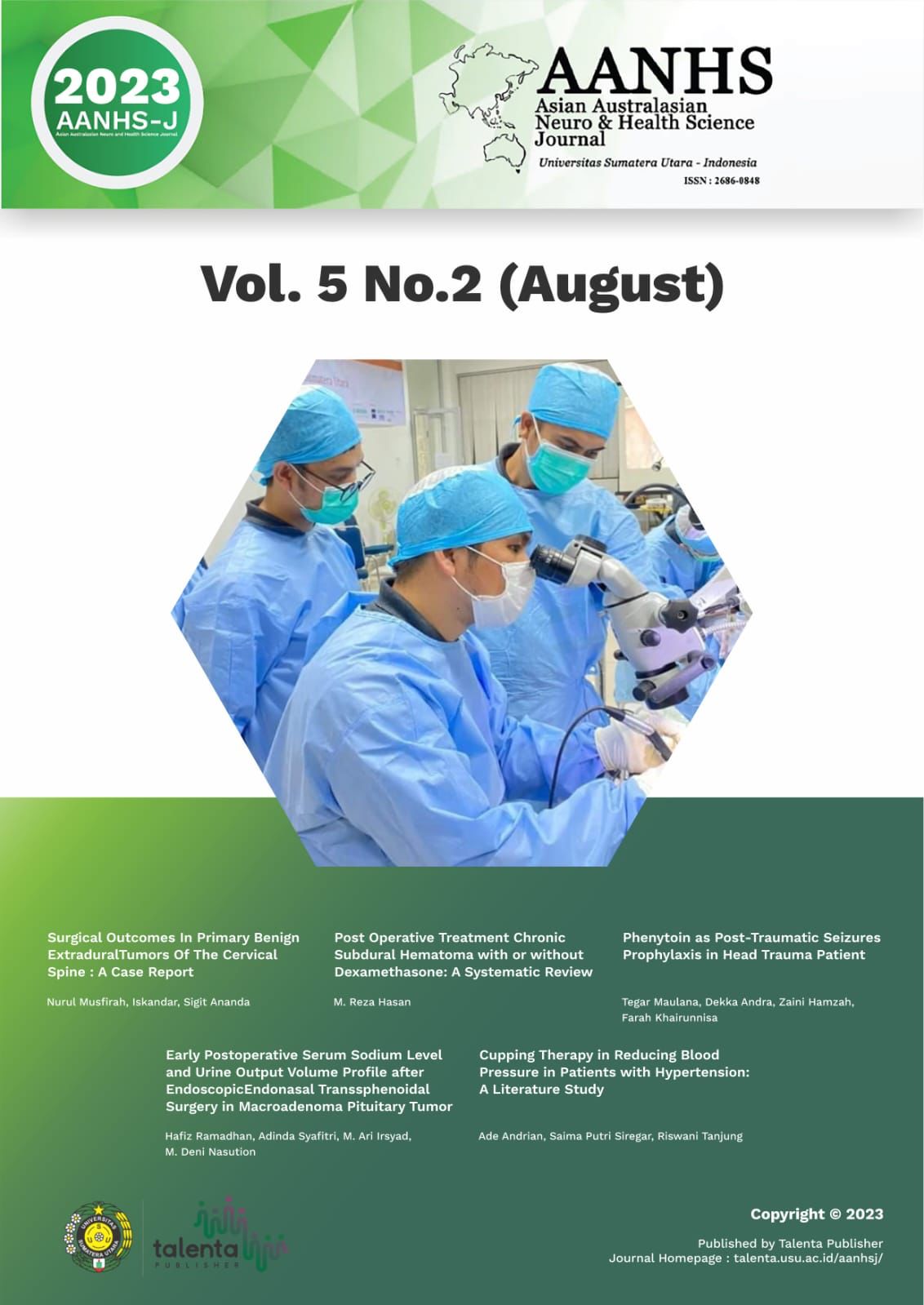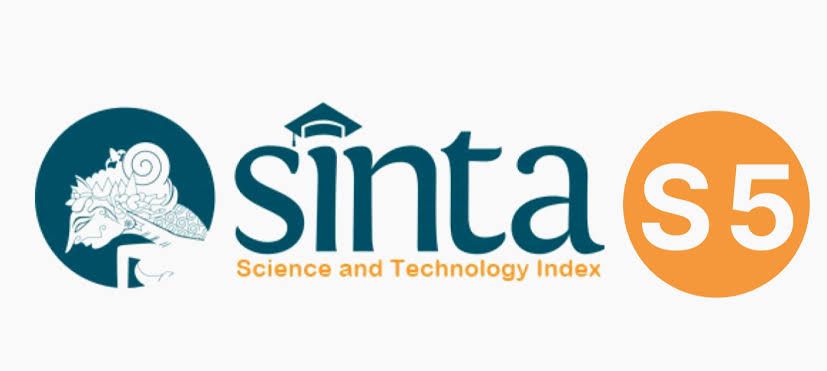Surgical Outcomes in Primary Benign Extradural Tumors of The Cervical Spine
A Case Report
DOI:
https://doi.org/10.32734/aanhsj.v5i2.12588Keywords:
Primary extradural tumor, Benign, Surgical OutcomeAbstract
Introduction: The prevalence of spinal tumors is rare, only about 15% of all cases of central nervous system tumors and 90% of cases occur at the age of >20 years, which is a productive age for a person.
Case Report: A young 25-year-old woman came to the polyclinic complaining of weakness of both hands and feet (all limbs). The MRI results show a suspected of a space occupying lesion of the extradural spinal cord. The patient then underwent tumor removal laminectomy surgery with a posterior approach. After the operation, his motoric was improving and increased to 4/4. After three months she was able to walk and perform daily activities.
Discussion: In younger patients, the tumor diagnosis may be more catastrophic, and the required treatment can have a severe impact on the patient's health-related quality of life. The patient was also very fast and assisted with early ambulation. This can be related to the progressivity of tumor cells, in this case a benign tumor with a border that is not aggressive in invading the surrounding tissue.
Conclussion: Early diagnostic and complete surgical resection before the occurrence of severe symptoms will show an excellent prognosis in benign primary extradural tumor. Multidisciplinary surgical planning should therefore also include the histological grade, stage, and extent of the tumor to establish the objective biological aggressiveness of the overlying tumor and in turn estimate the feasibility of resection
Keywords: Benign; Primary extradural tumor; Surgical outcome
Downloads
Downloads
Published
How to Cite
Issue
Section
License
Copyright (c) 2023 Asian Australasian Neuro and Health Science Journal (AANHS-J)

This work is licensed under a Creative Commons Attribution-ShareAlike 4.0 International License.
The Authors submitting a manuscript do understand that if the manuscript was accepted for publication, the copyright of the article shall be assigned to AANHS Journal.
The copyright encompasses exclusive rights to reproduce and deliver the article in all forms and media. The reproduction of any part of this journal, its storage in databases and its transmission by any form or media will be allowed only with a written permission from Asian Australasian Neuro and Health Science Journal (AANHSJ).
The Copyright Transfer Form can be downloaded here.
The Copyright form should be signed originally and sent to the Editorial Office in the form of original mail or scanned document.














